Overeating
is not only not good for you, it is not good for the planet.
If you are consuming more food than you need, then that food has to be grown
somewhere. It has to be harvested and transported at great cost in
environmental terms. If, there are billions of fat people all eating more
than they need for a healthy lifestyle, then the planet is being overworked
and producing more greenhouse gasses
than it needs to.
Okay,
so you are addicted to food because you stomach has gone over the edge. It
demands feeding and that in turn makes you ravenous. But you are the one
with the brain, not your stomach. If you
can train yourself to ignore the stomachs demands for fodder, you will be
helping to reduce global warming. Is that not a good reason to cut down on
consumption. Now, you'll have to excuse me while I find a nice big chocolate
bar to devour - in moderation of course.

Free launch event at The Sovereign Harbour
Yacht Club
7.00pm on Thursday 20th February 2014
FEEL
BETTER DIETS
There
are many diets that claim to make you feel better and the will work to
varying degrees, but it is claimed that the difference between 'The Feel Good
Diet' and other weight loss groups you may have tried before is that they are so confident you will lose weight on
their plan that they offer a 30 day money back guarantee. You can't say
fairer than that.
Follow this plan for 30 days and you will lose weight, GUARANTEED, or your money back.
If you would like to know more, why not go to their free launch event at The
Sovereign Harbour Yacht Club, 7.00pm on Thursday 20th February 2014.
6 Kingston Quay
Sovereign Harbour
Eastbourne
East Sussex.
BN235UP
Tel: 07791 278747 (UK)



CANNIBALISM
And
another thing, we could go back to the old days and start to eat each other.
It sound very Hannibal
Lecter, but we are animals and we rear animals for food, so why not eat
our way to a reduced population. Maybe the good doctor was not so mad after
all. We're told that human flesh tastes like pork.
Who wouldn't kill for a nice bit of crackling - well, of course you have to
kill the pig, or you couldn't eat it. The Aztecs
were very fond of a nice human leg, no doubt a sacrifice to the gods,
but, waste not want not. If not for a fellow passenger or two, quite a few airplane
crash survivors would have starved to death. So it is food for thought. Only
kidding.
SCIENCE
DAILY Nov. 5, 2010
Researchers at Harvard University say America's obesity epidemic won't plateau until at least 42 percent of adults are obese, an estimate derived by applying mathematical modeling to 40 years of Framingham Heart Study data.
The
good news is that if you can stop eating you will lose weight -
and that's that. I've done it when the situation was forced on
me. I lost roughly 1 pound every day by just drinking fluids. I
even lost the will to eat, which is nearly as dangerous as
over-eating. But eating is addictive and a psychological
condition triggered by the stomach. Without huge fat reserves a whale
would be unable to migrate. Humans don't need such large energy
reserves, but maybe this is evolution working to prepare some of
our species for who knows what? Food for thought.
Obesity
is a condition in which the natural energy reserve, stored in
the fatty
tissue of humans
and other mammals,
is increased to a point where it is a risk factor for certain health
conditions or increased mortality.
Obesity develops from the interaction of individual biology
and the environment. Excessive body weight has been shown to
predispose to various diseases,
particularly cardiovascular
diseases, diabetes
mellitus type 2, sleep
apnea, and osteoarthritis.
Obesity is both an individual clinical condition and is
increasingly viewed as a serious public
health problem.

The
effects of obesity are related not only to the amount of fat but
to the distribution. Central or visceral obesity, where fat
accumulates around the trunk and in the abdominal cavity, is
considered to be of higher risk than diffusely distributed
subcutaneous fat (Cotran, 1999).
TREATMENT
The main treatment for obesity consists of dieting and physical
exercise. Diet programs may produce weight loss over the short term, but maintaining this weight loss is frequently difficult and often requires making exercise and a lower food energy diet a permanent part of a person's
lifestyle. Success rates of long-term weight loss maintenance with lifestyle changes are low, ranging from
2–20%. Dietary and lifestyle changes are effective in limiting excessive weight gain in
pregnancy and improve outcomes for both the mother and the
child.
One medication, orlistat (Xenical), is current widely available and approved for long term use. Weight loss however is modest with an average of 2.9 kg (6.4 lb) at 1 to 4 years and there is little information on how these drugs affect longer-term complications of
obesity. Its use is associated with high rates of gastrointestinal side
effects and concerns have been raised about negative effects on the
kidneys. Two other medications are also available. Lorcaserin (Belviq) results in an average 3.1 kg weight loss (3% of body mass) greater than placebo over a
year. A combination of phentermine and topiramate (Qsymia) is also somewhat
effective.
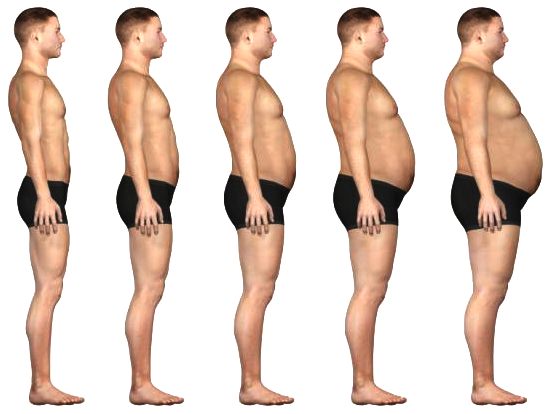
The most effective treatment for obesity is bariatric surgery. Surgery for severe obesity is associated with long-term weight loss and decreased overall mortality. One study found a weight loss of between 14% and 25% (depending on the type of procedure performed) at 10 years, and a 29% reduction in all cause mortality when compared to standard weight loss
measures. However, due to its cost and the risk of complications, researchers are searching for other effective yet less invasive treatments.
The rate of obesity in China has increased by 97% in 10
years, according to a government report.
China's
first official nutrition and health survey shows that between
1992 and 2002 more than 60 million people became obese. The
biggest problem is in China's cities, where 12% of adults and 8%
of children were classified as obese.
Health
officials have been blaming diets too high in fat and a decrease
in physical exercise. They
warn that obesity is likely to increase even further. However,
the study also found that levels of malnutrition and nutritional
deficiencies have dropped.
Health
advice needed
Results
of the 2002 survey were not fully computed until this year
because of the large numbers of people involved - more than
270,000 took part in the survey.
It found that while China had made progress in reducing poverty
its people needed advice about how to live a healthy lifestyle.

"The
Chinese population does not have enough awareness and lacks
knowledge of what is a reasonable nutrition and diet," AFP
news agency quoted Vice Health Minister Wang Longde as saying.
Some
people - especially urban residents - were eating too much meat,
oils and fats and not enough cereals, he said. Parents
and grandparents often fed their offspring excessively to make
up for being fed inadequately themselves, he added.
A
rise in car use and less physical labour were also contributing
factors, the survey said. Altogether, around 200 million people
are thought to be overweight, 22.8% of the population, and 60
million (7.1%) obese.
The
percentage of overweight people in the cities rose to 30%, and
the Beijing Morning Post published results of separate city
survey indicating that in the capital the figure was as high as
60%.
Poverty
link
Some
obesity co-factors are resistant to the theory that the
"epidemic" is a new phenomenon. In particular, a class
co-factor consistently appears across many studies. Comparing
net worth with BMI scores, a 2004 study found obese American
subjects approximately half as wealthy as thin ones. When income
differentials were factored out, the inequity persisted — thin
subjects were inheriting more wealth than fat ones. A higher
rate of lack of education and tendencies to rely on cheaper fast
foods is seen as a reason why these results are so dissimilar.
Another study finds women who married into higher status are
predictably thinner than women who married into lower status.
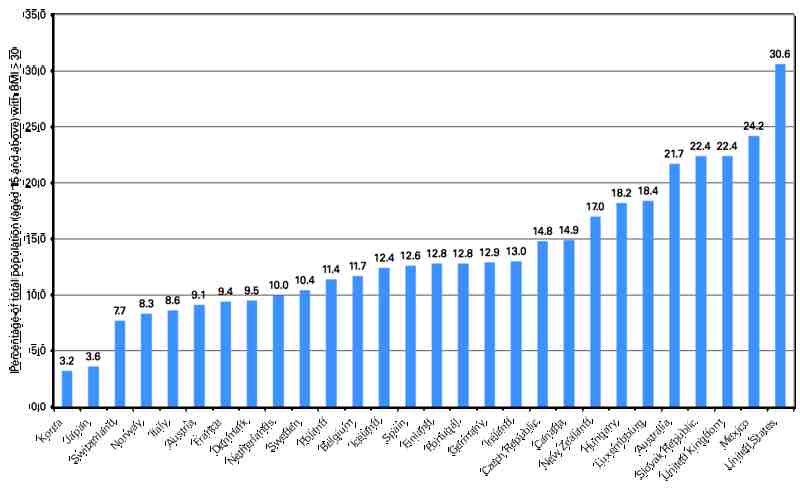
Graphic
chart comparing obesity percentages of the
total
population in OECD member countries
Public
health and policy - Prevalence
United
Kingdom
The
Health Survey for England
predicts that more than 12 million adults and 1 million children
will be obese by 2010 if no action is taken. The prime minister
has urged people to take more responsibility for their fitness
and diet.
United
States
The
prevalence of overweight and obesity in the United States makes
obesity a leading public health problem. The United States has
the highest rates of obesity in the developed world. From 1980
to 2002, obesity has doubled in adults and overweight prevalence
has tripled in children and adolescents. From 2003-2004,
"children and adolescents aged 2 to 19 years, 17.1% were
overweight...and 32.2% of adults aged 20 years or older were
obese." The prevalence in the United States continues to
rise. The prevalence of obesity has been continually rising for
two decades. This sudden rise in obesity prevalence is
attributed to environmental and population factors rather than
individual behavior and biology because of the rapid and
continual rise in the number of overweight and obese
individuals. The current environment produces risk factors for
decreased physical activity and for increased calorie
consumption. These environmental factors operate on the
population to decrease physical activity and increase calorie
consumption.
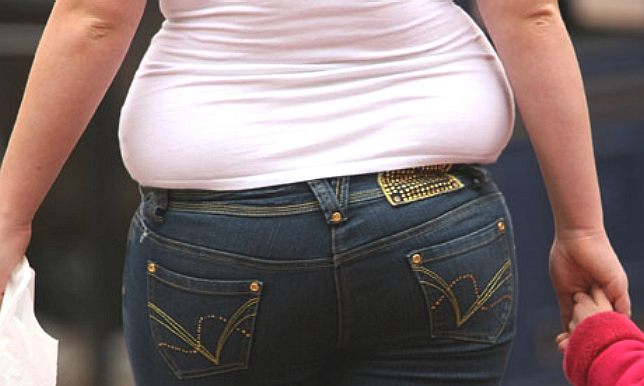
Environmental
factors
While
it may often appear obvious why a certain individual gets fat,
it is far more difficult to understand why the average weight of
certain societies have recently been growing. While genetic
causes are central to understanding obesity, they cannot fully
explain why one culture grows fatter than another.
This
is most notable in the United
States. In the years from just after the Second
World War until 1960 the average person's weight increased,
but few were obese. In the two and a half decades since 1980 the
growth in the rate of obesity has accelerated markedly and is
increasingly becoming a public health concern.
Contemporary
culture
In
modern Western culture, the obese body shape is widely regarded
as unattractive. Obese bodies are rarely positively represented
in mainstream media. Many negative stereotypes are commonly
associated with obese people, such as the belief that they are
lazy, dirty, stupid, or even evil. Some point to gluttony, the
second of the seven deadly sins, when referring to the this last
stereotype. Obese children, teenagers and adults face a heavy
social stigma. Obese children are frequently the targets of
bullies and are often shunned by their peers. Obesity in
adulthood can lead to a slower rate of career advancement. Most
obese people have experienced negative thoughts about their body
image, and many take drastic steps to try to change their shape.
Not
all contemporary cultures disapprove of obesity. There are many
cultures which are traditionally more approving (to varying
degrees) of obesity, including some African, Arabic,
Indian, and
Pacific Island cultures. Especially in recent decades, obesity
has come to be seen more as a medical condition in modern
Western culture.
Recently
emerging is a small but vocal fat acceptance movement that seeks
to challenge weight-based discrimination. Obesity acceptance and
advocacy groups have initiated litigation to defend the rights
of obese people and to prevent their social exclusion.
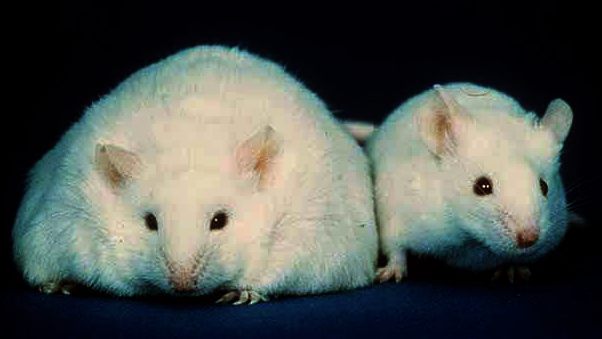
GENETICS
Like many other medical conditions, obesity is the result of an interplay between genetic and environmental factors. Polymorphisms in various genes controlling appetite and metabolism predispose to obesity when sufficient food energy present. As of 2006 more than 41 of these sites have been linked to the development of obesity when a favorable environment is
present.People with two copies of the FTO gene (fat mass and obesity associated gene) has been found on average to weigh 3–4 kg more and have a 1.67-fold greater risk of obesity compared to those without the risk
allele. The percentage of obesity that can be attributed to genetics varies, depending on the population examined, from 6% to
85%.
Obesity is a major feature in several syndromes, such as Prader-Willi syndrome, Bardet-Biedl syndrome, Cohen syndrome, and MOMO syndrome. (The term "non-syndromic obesity" is sometimes used to exclude these
conditions.) In people with early-onset severe obesity (defined by an onset before 10 years of age and body mass index over three standard deviations above normal), 7% harbor a single point DNA
mutation.
Studies that have focused upon inheritance patterns rather than upon specific genes have found that 80% of the offspring of two obese parents were obese, in contrast to less than 10% of the offspring of two parents who were of normal
weight.
The thrifty gene hypothesis postulates that due to dietary scarcity during human evolution people are prone to obesity. Their ability to take advantage of rare periods of abundance by storing
energy as fat would be advantageous during times of varying food availability, and individuals with greater adipose reserves would be more likely survive famine. This tendency to store fat, however, would be maladaptive in societies with stable food
supplies. This theory has received various criticisms and other evolutionarily based theories such as the drifty gene hypothesis and the thrifty phenotype hypothesis have also been proposed.

PUBLIC
HEALTH
The World Health Organization (WHO) predicts that overweight and obesity may soon replace more traditional public health concerns such as undernutrition and infectious diseases as the most significant cause of poor
health. Obesity is a public health and policy problem because of its prevalence, costs, and health
effects.
Public health efforts seek to understand and correct the environmental factors responsible for the increasing prevalence of obesity in the population. Solutions look at changing the factors that cause excess food energy consumption and inhibit physical activity. Efforts include federally reimbursed meal programs in schools, limiting direct junk food marketing to
children, and decreasing access to sugar-sweetened beverages in
schools. When constructing urban environments, efforts have been made to increase access to parks and to develop pedestrian
routes.
Many countries and groups have published reports pertaining to obesity. In 1998 the first US Federal guidelines were published, titled "Clinical Guidelines on the Identification, Evaluation, and Treatment of Overweight and Obesity in Adults: The Evidence
Report". In 2006 the Canadian Obesity Network published the "Canadian Clinical Practice Guidelines (CPG) on the Management and Prevention of Obesity in Adults and Children". This is a comprehensive evidence-based guideline to address the management and prevention of overweight and obesity in adults and
children.

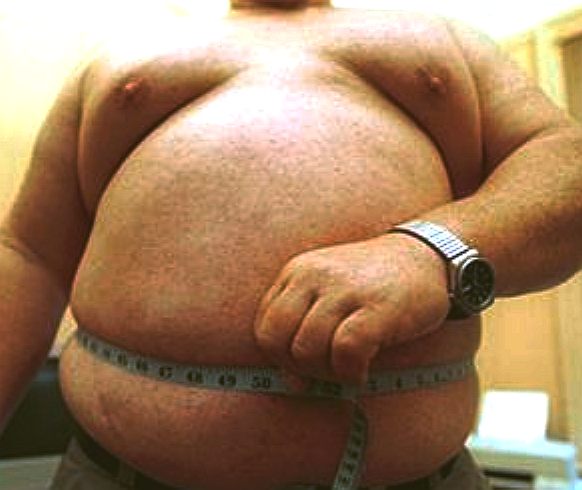
In 2004, the United Kingdom Royal College of Physicians, the Faculty of Public Health and the Royal College of Paediatrics and Child Health released the report "Storing up Problems", which highlighted the growing problem of obesity in the
UK. The same year, the House of Commons Health Select Committee published its "most comprehensive inquiry [...] ever undertaken" into the impact of obesity on health and society in the UK and possible approaches to the
problem. In 2006, the National Institute for Health and Clinical Excellence (NICE) issued a guideline on the diagnosis and management of obesity, as well as policy implications for non-healthcare organizations such as local
councils. A 2007 report produced by Sir Derek Wanless for the King's Fund warned that unless further action was taken, obesity had the capacity to cripple the National Health Service
financially.
Comprehensive approaches are being looked at to address the rising rates of obesity. The Obesity Policy Action (OPA) framework divides measure into 'upstream' policies, 'midstream' policies, 'downstream' policies. 'Upstream' policies look at changing society, 'midstream' policies try to alter individuals' behavior to prevent obesity, and 'downstream' policies try to treat currently afflicted people.
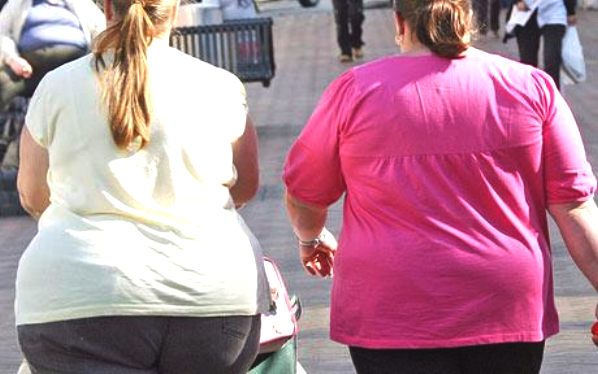
LINKS
and REFERENCE
U.S.
Dept. of Health and Human Services, National Institutes of
Health, 'The Practical Guide: Identification, Evaluation and
Treatment of Overweight and Obesity in Adults 5 (2000) PDF
Quetelet
LAJ (1871). Antropométrie ou Mesure des Différences
Facultés de l'Homme. Brussels: Musquardt.
World
Health Organization. Technical report series 894:
"Obesity: preventing and managing the global
epidemic.". Geneva: World Health Organization, 2000. PDF.
ISBN 9241208945.
Mei
Z, Grummer-Strawn LM, Pietrobelli A, Goulding A, Goran MI,
Dietz WH. Validity of body mass index compared with other
body-composition screening indexes for the assessment of
body fatness in children and adolescents. Am J Clin Nutr
2002;75:978-85. PMID
12036802.
Romero-Corral
A, Montori VM, Somers VK, Korinek J, Thomas RJ, Allison TG,
Mookadam F, Lopez-Jimenez F. Association of bodyweight with
total mortality and with cardiovascular events in coronary
artery disease: a systematic review of cohort studies. Lancet
2006;368:666-78. PMID
16920472
Yusuf
S, Hawken S, Ounpuu S, Dans T, Avezum A, Lanas F, McQueen M,
Budaj A, Pais P, Varigos J, Lisheng L, INTERHEART Study
Investigators. (2004). "Effect of potentially
modifiable risk factors associated with myocardial
infarction in 52 countries (the INTERHEART study):
case-control study.". Lancet 364: 937-52.
PMID
15364185.
Bulik
CM, Wade TD, Heath AC, Martin NG, Stunkard AJ, Eaves LJ.
Relating body mass index to figural stimuli:
population-based normative data for Caucasians. Int J
Obes Relat Metab Disord 2001;25:1517-24. PMID
11673775.
Flier
JS (2004). "Obesity wars: molecular progress confronts
an expanding epidemic". Cell 116 (2):
337-50. PMID
14744442.
Zagorsky
JL. Is Obesity as Dangerous to Your Wealth as to Your
Health? Res Aging 2004;26:130-152. PDF
fulltext.DOI:10.1177/0164027503258519.
Whitmer
RA, Gunderson EP, Barrett-Connor E, Quesenberry CP Jr, Yaffe
K (2005). "Obesity in middle age and future risk of
dementia: a 27 year longitudinal population based
study". BMJ 330 (7504): 1360. PMID
15863436.
Sørensen
TI, Rissanen A, Korkeila M, Kaprio J (2005). "Intention
to lose weight, weight changes, and 18-y mortality in
overweight individuals without co-morbidities". PLoS
Med 2 (6): e171. PMID
15971946.
Snow
V, Barry P, Fitterman N, Qaseem A, Weiss K (2005). "Pharmacologic
and surgical management of obesity in primary care: a
clinical practice guideline from the American College of
Physicians". Ann Intern Med 142 (7):
525-31. PMID
15809464. Fulltext.
Obesity
Surgery Complication Rates Higher Over Time. Press Release,
July 24, 2006. Agency for Healthcare Research and Quality,
Rockville, MD. Obesity
Powdermaker
H. "An anthropological approach to the problem of
obesity." In: Food and Culture: A Reader. Ed.
Carole Counihan and Penny van Esterik. New York: Routledge,
1997;206. ISBN 0415917107.
BBC
England
to have 13m obese by 2010 25 August 2006
Forecasting
obesity to 2010
Guardian
Society
Ogden
C, Carroll M, Curtin L, McDowell M, Tabak C, Flegal K.
Prevalence of Overweight and Obesity in the United States,
1999 - 2004. JAMA 2006;295:1549-1555. PMID
16595758.
Centers
for Disease Control and Prevention, U.S. Obesity Trends 1984
- 2002 Obesity.
Morrill
A, Chinn C. The obesity epidemic in the United States. J
Public Health Policy 2004;25:353-366. PMID
15683071.
Levine
JA, Lanningham-Foster LM, McCrady SK, Krizan AC, Olson LR,
Kane PH, Jensen MD, Clark MM (2005). "Interindividual
variation in posture allocation: possible role in human
obesity". Science 307 (5709): 584-6. PMID
15681386 DOI:10.1126/science.1106561.
Lopez
R (2004). "Urban sprawl and risk for being overweight
or obese". Am J Public Health 94 (9):
1574-9. PMID
15333317.
Atlantic
(Subscription site)

"A
Lot Easier Said Than Done: Parents Talk About Raising
Children in Today's America", Public Agenda, (2002)
[http://www.hhs.gov/news/press/2004pres/20040715.html
"HHS Announces Revised Medicare Obesity Coverage
Policy"
Dannenberg
AL, Burton DC, Jackson RJ. Economic and environmental costs
of obesity: the impact on airlines. Am J Prev Med
2004;27:264. PMID
15450642.
109th
U.S. Congress (2005-2006) H.R. 554: 109th U.S. Congress
(2005-2006) H.R. 554: Personal Responsibility in Food
Consumption Act of 2005
EA
Finkelstein, IC Fiebelkorn, G Wang, National medical
spending attributable to overweight and obesity: how much,
and who’s paying. Health Affairs, 2003. Fulltext.
World
Health Organization - Obesity pages
Diet,
Nutrition and the prevention of chronic diseases
(including obesity) by WHO/FAO Expert consultation (2003). Summary
by GreenFacts.
Obesity
at Endotext.org
International
Task Force on Obesity
Rudd
Center for Food Policy and Obesity at Yale University
Australasian
Society for the Study of Obesity
Chinese
concern at obesity surge 12 Oct 04
China
battles obesity

F.A.C.T.
(Falsely Accused Carers and Teachers)
PO Box 3074
Cardiff CF3 3WZ
Tel: 029 2077 7499
E-mail: info@factuk.org
Website: www.factuk.org
Campaigning organisation and support group which provides help and
advice to falsely accused and wrongly convicted carers and
teachers throughout the UK. The website contains a range of
information, leaflets, books and links.
Guidance
for education staff and volunteers in schools
Website: www.lg-employers.gov.uk/conditions/education/allegations
This website has guidance on: 1) staff facing an allegation of
abuse; 2) preventing 'abuse of trust' for education staff; and 3)
the conduct of education staff working with young people.

LINKS
and REFERENCE
"Single
Parents" PoBronson.com (accessed October 9, 2006)
(2005).
"Single
parenting" CYH.com (accessed October 9, 2006)
Bankston,
Carl L. and Caldas, Stephen J., Family Structure, Schoolmates,
and Racial Inequalities in School Achievement, Journal of
Marriage and the Family 60:3 (1998), 715-723.
Dependent
Children: 1 in 4 in lone-parent families," National
Statistics Online, National Statistics, United Kingdom (July
7, 2005) . Accessed at: http://www.statistics.gov.uk/cci/nugget.asp?id=1163
on July 17, 2006.
Geographic
Distribution: London has most lone-parent families,"
National Statistics Online, National Statistics, United
Kingdom (July 7, 2005). Accessed at: http://www.statistics.gov.uk/cci/nugget.asp?id=1166
on July 17, 2006.
Hilton,
J., Desrochers, S.,Devall, E. Comparison of Role Demands,
Relationships, and Child Functioning is Single-Mother,
Single-Father, and Intact Families. Journal of Divorce and
Remarriage ,35(?) 29-56.
Mulkey,
L.; Crain, R; Harrington, A.M. One-Parent Households and
Achievement: Economic and Behavioral Explanations of a Small
Effect. Sociology of Education, 1992, 65, 1, Jan, 48-65
Pong,
Suet-ling The School Compositional Effect of Single Parenthood
on 10th Grade Achievement, Sociology of Education 71:1 (1998),
23-42.
Quinlan,
Robert J. Father absence, parental care, and female
reproductive development. Evolution and Human Behavior, Volume
24, Issue 6, November 2003, Pages 376-390
Richards,
Leslie N.; Schmiege, Cynthia J. Family Relations, Vol. 42, No.
3, Family Diversity. (Jul., 1993), pp. 277-285.
Risman,
Barbara J., and Park, Kyung. (1988). Just The Two of Us:
Parent-Child Relationships in Single-Parent Homes. Journal of
Marriage and the Family, 1988, 50, 4, Nov, 1049.
Sacks,
G. (September 4, 2005) “Boys without fathers is not a
logical new idea.” Arkansas Democrat-Gazette (Little Rock,
Arkansas)
States
News Service. (2005 July 20). “America’s Children: Family
Structure and Children’s Well-Being
*Quotes
taken from Neale B and Wade A (2000) 'Parent problems!
Children's views on life when parents split up', Young
Voice/Nuffield.
http://www.news.cornell.edu/Chronicle/04/5.13.04/single_parents
http://www.census.gov/prod/2003pubs/p60-225.pdf
http://www.fathers-4-justice.org/index_2.htm
http://www.cyh.com/HealthTopics/HealthTopicDetails
http://www.pobronson.com/factbook/pages/43.html
http://www.hansm.org
http://www.oneparentfamilies.org.uk/facts
http://www.javilonesomefather.org.uk
NATIONAL
COUNCIL FOR ONE PARENT FAMILIES
Registered
charity no: 230750
Email web@oneparentfamilies.org.uk.
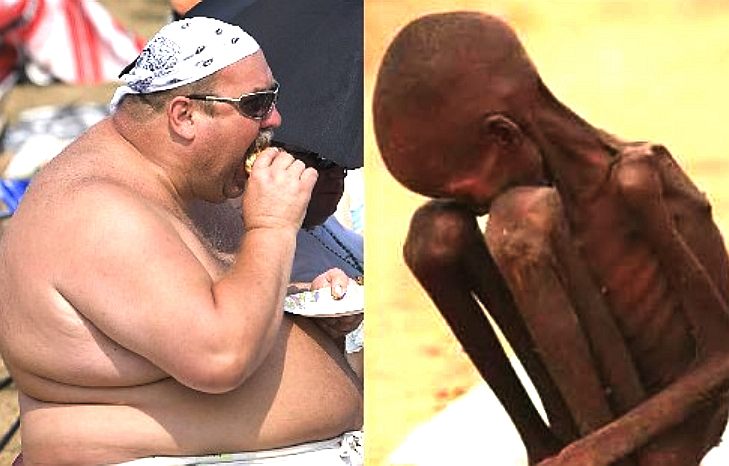
Disclaimer:
Some of the views expressed on this website are those of
individual contributors and do not necessarily represent the
views of SN. All content is for general information only and is
not intended to replace professional advice of any kind. SN is
not responsible or liable for any actions taken by a user of
this site. SN is not liable for the contents of any external
sites listed, nor does it endorse any advice, products or
services mentioned on these sites.
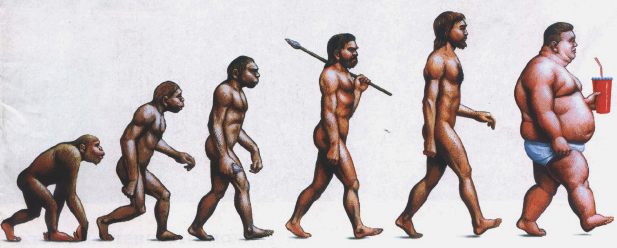
In
the wild we had to work much harder to earn our food for energy - so we kept
fitter. With convenience food in abundance, it is hardly surprising that our
natural urge to feed leads to speedy weight gain.
HUMANS:


There
are now hundreds of diet plans all claiming huge weight losses. In case you
had not realized, if you simply stop eating solids and drink only four or
five cups of tea or coffee a day, you will lose at least one pound a day.
The proof of this concept is that nobody came out of Auschwitz
fat.
OTHER
ANIMALS:
|
AMPHIBIANS |
Such
as frogs (class: Amphibia) |
|
ANNELIDS |
As
in Earthworms (phyla: Annelida) |
|
ANTHROPOLOGY |
Neanderthals,
Homo Erectus (Extinct) |
|
ARACHNIDS |
Spiders
(class: Arachnida) |
|
BIRDS
|
Such
as Eagles, Albatross
(class: Aves) |
|
CETACEANS
|
such
as Whales
& Dolphins
( order:Cetacea) |
|
CRUSTACEANS |
such
as crabs (subphyla: Crustacea) |
|
DINOSAURS
|
Tyranosaurus
Rex,
Brontosaurus (Extinct) |
|
ECHINODERMS |
As
in Starfish (phyla: Echinodermata) |
|
FISH
|
Sharks,
Tuna (group: Pisces) |
|
HUMANS
-
MAN |
Homo
Sapiens THE
BRAIN |
|
INSECTS |
Ants,
(subphyla: Uniramia class: Insecta) |
|
LIFE
ON EARTH
|
Which
includes PLANTS
non- animal life |
|
MAMMALS
|
Warm
blooded animals (class: Mammalia) |
|
MARSUPIALS |
Such
as Kangaroos
(order: Marsupialia) |
|
MOLLUSKS |
Such
as octopus (phyla: Mollusca) |
|
PLANTS |
Trees
- |
|
PRIMATES |
Gorillas,
Chimpanzees
(order: Primates) |
|
REPTILES |
As
in Crocodiles,
Snakes (class: Reptilia) |
|
RODENTS |
such
as Rats, Mice (order: Rodentia) |
|
SIMPLE
LIFE FORMS
|
As
in Amoeba, plankton (phyla: protozoa) |
|
Obesity
- Youtube
|
UK's
fattest lady - Youtube
|
|
USA
fattest man
- Youtube
|
Larry
@ 700lbs - Youtube
|
High
fructose sugar is proven to increase the risk of obesity
..
thirst for Life

Solar
Cola uses pure cane sugar instead of high fructose corn syrup
so
is a healthier alternative according to studies (natural flavourings)


















